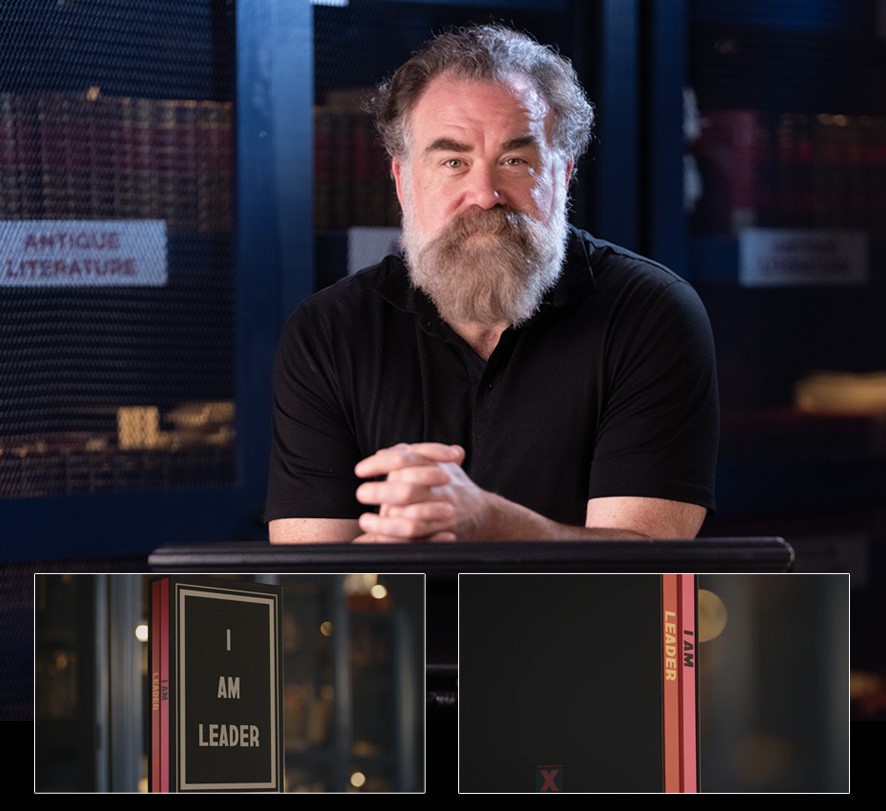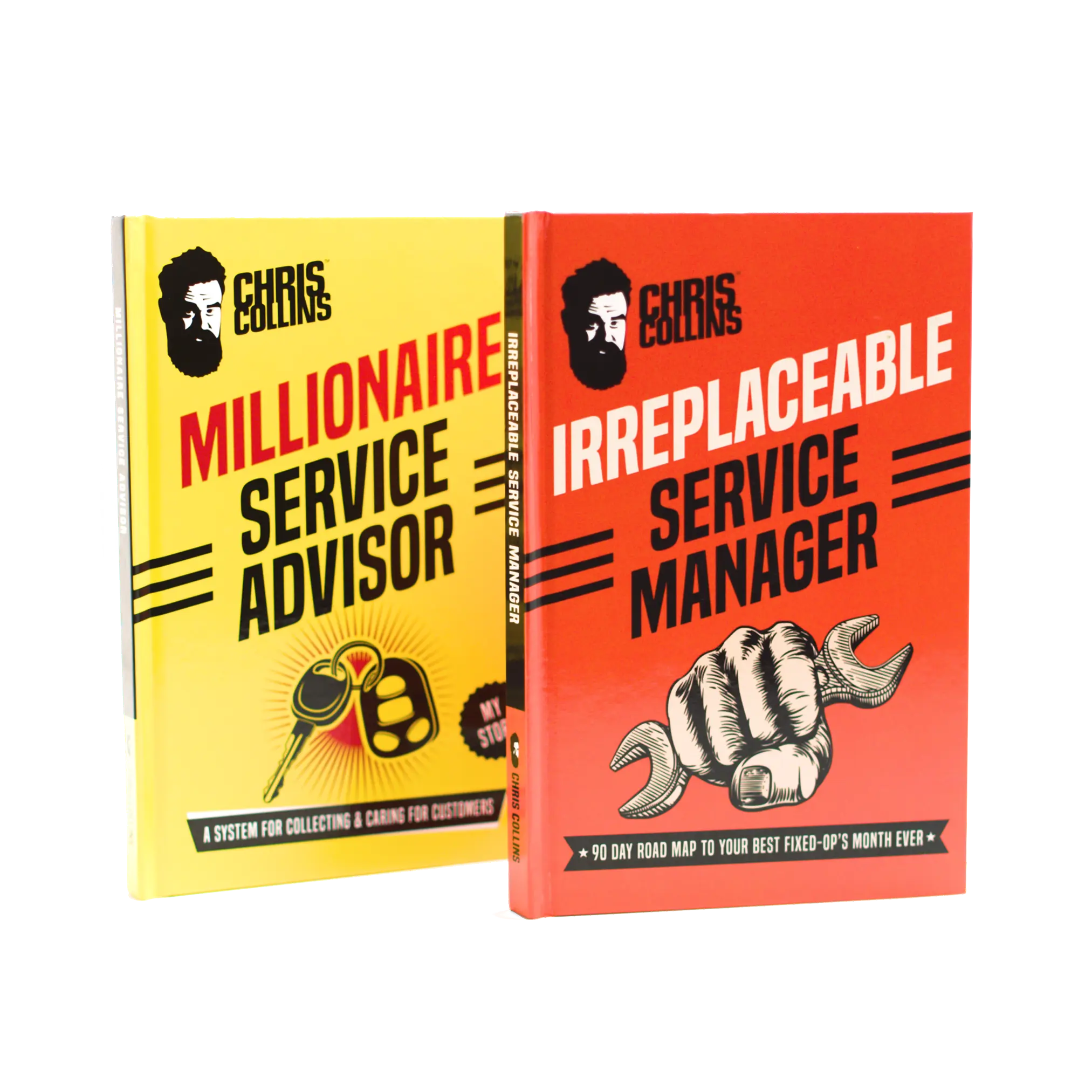I’ve gotta get out of LA. It’s like Armageddon here. People keep getting shot; somebody got shot right in the throat two blocks away yesterday! I asked Jeremy where we should move, but he insists on staying in California and he had something really interesting to say about everything going on right now:
With all this chaos going on, you need a car with peak performance and reliability if you need to get out of town right away, and that’s why our customers need to take better care of their cars.
If I owned a shop in Downtown LA, that’s where I’d be staying. I’d do armor plating, bulletproof glass; I’d be selling that like crazy! At least, I think I should get in on that before Tesla does.
Today, we’re going to talk about how to steal market share during this upcoming tire season, or as Christian cleverly put it, ‘turning rubber into glue.’ We have some fun, insightful stuff, and we’re separating it into two categories: the northern shops and the southern shops. Tire season is different for both of them, like you don’t really have a huge tire season in the south like you do for the north; but we have an answer for both!
In the early to mid-90s, we’d see each customer about four times a year. We’d put the oil sticker on; three months, 3,000 miles. Now, some cars only need one service per year. Clients always ask, “Hey, how do we get more business? How do we make calls?”
The spring and fall seasons are great times to get the customer back in the shop, but there has to be great purpose and reason to drum up the old database of customers that haven’t been in for more than a year or two. One thing you can do is get a campaign going that says, ‘Get ready for fall or winter driving!’
Now, there’s a reason why tire season is a way bigger thing in the north, and that’s because they get snow season up there so customers have their winter tires and their summer tires, right? You can charge for it or you can make it a part of the benefit of buying the car, but either way, it’s a retention tool. Often times, two things happen; two objections come to light when we talk about this with the client:
One is, “Oh, we tried that and we lost their wheels,” or whatever so you do have to be organized with it. You need to wrap them in plastic and put the customer’s RO or information inside the plastic so that if it leaks or rains, we still know who those belong to. You have to commit to it and have a system to wrap them so that they’re all together. We’ve had clients that would have one container, like the ones on the back of a semi, and they’d have overflowing; you can’t get in or out of it. You’ve got to put them somewhere where they’re inventoried and you can easily get to them. Then, if you call months out and schedule it, then you have them brought over and you’re ready to go.
Another thing that happens is, “Oh, we have nowhere to store them,” but I’ve never had that be the case. I can find wherever your shop or dealership is and find a warehouse space cheap if I draw a three-mile radius around it. The retention is worth renting a warehouse for a couple thousand dollars a month. It’s simple, stupid! It’s almost your advertising budget. It’s really easy. I’ve yet to find the limit of how much you can charge to store and mount and balance. The most we’ve charged is $399, and there wasn’t a deterrent. When customers say, “Oh, we don’t have anywhere to store them,” I always tell them to just charge more. If you’re storing 200 of them every season – we could probably store 400 if you weren’t an ‘anti-storing them’ machine, but if we charge $250, it pays for itself!
The other mistake they make is, “Whoa, we just get too much in June.” You have to be proactive and tell the customers so you can book them ahead of time; control the input. Call them a month out and plan it; don’t let them all just show up at one time.
You want to plan that out months ahead of time to swap it, but you’re going to sell more tires and you’re going to sell more alignments. Then, they’re going to come in for the other stuff. Also inspect the car or truck when you do change the rims for them.
I don’t know how many clients we’ve had that will do the storage part, but they just have a kid doing it for $8 an hour and nobody’s inspecting! They’re just letting all this opportunity go to waste because they don’t control the input. They don’t control how many are coming in and too often they’re leaving it to chance!
They let customers wait until the very last minute and then they panic. We’ve had a lot of clients up north where they don’t call until after first snowfall because that’s when they get their big rush of tires, right? And then all of a sudden, it’s complete chaos. That’s the big thing with that tire stuff: if you have all their tires – for the 200 or 400 people that you’ve got – and you start scheduling out five a day from mid-September to the end of October, then it’s nice and easy guaranteed revenue.
By the way, your Parts Manager has time to do this. Jeremy will tell you… All joking aside, I find that parts managers are pretty good at figuring it out once they accept the task because they do fight it at first…
One of the interesting things in the states, though, is that some customers might not want to schedule their tires even after that big first snowfall because they’re like, “Well, if it’s still 60 degrees outside, I’m going to burn the tires up. I’m just going to wait until we get snow on the ground.”
But that’s easy to overcome. You just say, “Hey, we need to get ahead of this because when it does happen, everybody will want to come in at one time and you don’t want to be stuck where we might have to have you wait a couple of days.”
Just tell the customer the truth!
Also, if you’re a dealership, every time you sell a new or used car, you could give them a coupon for half off the first storage or even do it for free for the first year. Once they get hooked in and you have one set, you’ve got them. All you need is the wheels. It’s over after that.
It’s always funny to me how I’ll be like, “Okay, how many do you guys store?” and they’re like, “Oh, 50.”
“Well, how many new cars do you sell a month?”
“150.”
So in a year, you’re selling 1,800 cars? No! It starts in F&I. It starts at the sale and then how many used cars. Why can’t you store them on those, too? It starts up front. You have home field advantage, act like it!
With independents, it can be a competitive advantage if you want to come up with a very unique marketing campaign to steal some of the market share. If you’re not storing tires, think outside of the box and find a place to do it and create that as another revenue string because if you can add 300 or 400 sets of tires that you’re storing, that’s a golden opportunity to do a full inspection on the car and really build a great relationship with a customer when you pull that car out of the dealership.
Now, with our southern dealers, tire maintenance is actually due more often than oil maintenance, which is crazy. Use the change of season as a reason to get them back in for a pit stop; let us check out your tire pressure, top up your fluids, and inspect everything.
I find that probably the best retention tool is lifetime alignments. If you charge $129 for a regular alignment, you can charge $299 for the lifetime, but you’re hooking them in. They’re going to come in for alignments, but then they’re also going to get tires and everything else.
Jeremy used to do lifetime oil changes which were really successful in the late 90s and early 2000s, but then that’s gone away just like lifetime cabin air filter. We have a dealer group as clients and when we started coaching them, you would hear a lot from the managers like, “Oh, these things are bringing down my averages.” They’re not looking at it as an opportunity or retention tool even though it’s one of the best ways to retain customers. Now, they’re not saying that anymore, and they’re doing way better and selling more.
It always blows me away when I do the math. You can pack it into a new car, you can write it off to advertising, whatever it is. I would rather have the retention and the opportunity to keep customers coming back than losing them forever. When Christian was at his Infiniti store and I came in, one of the first things he thought I was going to say was, “Do away with the free oil change program.”
I think people think that a lot, but then I said, “That’s a great idea! I can’t believe that more people don’t do it.” To his surprise, it was really fair and equitable. They wrote off the costs of the oil change and it was split between parts, service, and sales, and their retention was in the 80s. It’s crazy that you can totally retain 80% if you want, but dealers usually only retain 20-25%!
Jeremy makes a point on the show about why more dealerships and even independents don’t use the Costco membership model and just create an exclusive club, which I think is interesting because I was just thinking the other day about the Ferrari store here in Calabasas. It used to be 50 grand just to join the club and be able to buy a car from them. They were serving Beverly HIlls and all that, and I wondered if there was a model for that.
Turns out, Jeremy’s shop is moving more towards that direction with their VIP program, almost like an extended warranty/maintenance program. What he’s going to do is package the annual maintenance that the car needs into the membership costs so it’s not out of pocket for the basic things, and it would just be different depending on if it’s a Honda or a Ford or whatever.
Look at Fletcher Jones Mercedes in Newport Beach – the largest Mercedes-Benz dealership in the word – and how crazy busy their carwash is. When you pull into their service shop, you can’t tell which line is for service and which line is for the car wash. I imagine that if you buy a car from them, you get a free car wash at any time. That’s great but it might be better to limit that to a certain number per year and make that an exclusive member benefit for a certain percentage of costs, and create a club where it can be more profitable for you than just giving it to everybody.
We did that at Crevier right down the street from Fletcher and the thing was our grosses on the front end were $500-600 more than the market and in the western region. And so, telling customers how often they could come in for it was a really easy thing to pay for. It’s cheaper than free oil changes. We did focus groups on that and what was interesting was that we had Fletcher Jones customers. The thing we learned from it was that most of it wasn’t about the car wash, it was the networking! People would go to Fletcher and hang out in their coffee shop. None of them cared about the putting green, but it was the networking and we realized that and changed our dealership to create that environment where people could hang out socially.
That’s what it is in Orange County; it’s more of a social thing. I don’t know how many luxury car markets you have in the country as good as Orange County. Probably Dallas, Miami– I’m not going to say Manhattan because a lot of the people with money in Manhattan have their own drivers so it’s not the same kind of luxury market. San Francisco and New York are old money while Orange County and Dallas are new money so there’s a way that people act. With new money, you see a lot of chrome wheels, and it’s a lot of image and ‘who I am.’ It’s keeping up with the Joneses on another level.
The point I’m making is that I wouldn’t do the membership tiers because it’s more about the social thing and if you can get them in. The whole thing is to get them to think about the dealership in a different way. If you have art shows or wine tasting where you try to break the pattern of how people feel about the dealership, you’re going to make it up on gross on their next car if they feel like it’s more of a club and you’re part of their tribe. They’re going to be less about price and more about what you can do for me.
In finance, when you bought a car, we’d put a VIP sticker on the inside of your windshield so when you pulled up, they could see that you’re a Crevier customer and you got free car washes. There was a value to that. So much actually that somebody stole some and sold them on eBay.
I’m a huge fan of adding new streams of income, but I’m just telling you that we didn’t need to play with the membership model because of all the money we were making. It’s a status thing. It’s more clique-y. The thing is it’s so easy to please those customers when it’s all about status because it’s rough, it’s ego. The easiest thing to do is feed somebody’s ego. You need to tell them how smart and good-looking they are. Don’t fight with them, let them always be right, and then they’re loyal.
It’s different than a customer that’s buying a price, right? You take a Toyota customer that’s all about reliability and price, that’s a little harder because you can’t just tell them they’re good-looking and smart. Well, you can and it works, but not to the same degree.
That’s it about how you can steal market share this upcoming tire season, and also how you can set up some sort of VIP program that’ll improve your retention so much that you don’t need to worry about the overhead cost. Now, let’s move onto our two questions for this week…
“Hey, Chris. Looking for some advice. I’m a writer at a Chrysler dealership for a very large dealer group in Michigan. I’ve become the go-to guy in service for every other department, causing me to take on too much at times and taking me away from my responsibilities to my customers. I feel like this is holding me back from my goal of being the top writer in the group and ultimately becoming a service manager. I have a hard time telling anyone, ‘No,’ because I take pride in being someone that others can rely on. Any ideas on how I should handle this to get myself to the next level? Thanks in advance for any possible insight. Your books and podcasts have helped me a ton in getting where I am today!”
I think the first thing you got to think about – besides maybe not working at Chrysler or being a Lions or Packers fan – is that you’re not telling people, “No.” What you want to do as an advisor is you want to come from a place of empathy and service, and you want to tell them the truth. That’s the key. It’s not about telling anybody, “No,” it’s about having empathy for their situation; trying to do the best you can for them with the tools you have, and then telling the truth.
If it’s going to take two days, it’s going to take two days. If the quick lube techs are backed up and it’s going to be an hour and a half, I would rather tell them it’s going to be an hour and a half now than tell them in an hour after they thought it was going to be 45 minutes.
I’m guessing what you’re doing here is you’re projecting this weird thing about how you feel and your self image in trying to please people by telling them what you think they want to hear, but telling them what they want to hear is not going to do any good or serve you! I get the empathy thing’s easy for you because you probably have that, but the truth part might be messing you up.
If you have a hard time telling people, “no,” just reframe it. Jeremy’s advice is to say, “I can absolutely help you with that. I just have a question first: What would you do if I couldn’t help you with that?”
When they give you an answer, say, “That’s a great decision. Go do that.” Then, walk on and go do the other thing.
Christian’s advice is to remember at any time the sales department comes back to you that there’s a customer strapped to the other side of that whole request. It’s an opportunity, like a free oil change. If he’s doing internal work for somebody like putting splash guards on a car, he would ask for the customer information and call them up like, “Hey, my name is Christian. I’m going to be taking care of the splash guard installation for you today. I just wanted to let you know when it’s time for your first service that I’m going to be the person that you’re going to be the person that you’re going to take care of as well because it’s really important to us that you have a great ownership experience all throughout the time that you have the vehicle.”
The interesting thing on the show is that we all interpreted the question differently so that’s three different answers. That’s like a coaching call wrapped up in there.
“Hi, Chris. I’ve recently discovered your videos. I think they’re fantastic and insightful. They seem to be centered in doing the right thing for your customer and the right thing will happen for you. Due to COVID, my industry has imploded. Imploded. I really want to become a service advisor, but I’m finding it difficult to get in the game. I think my age is part of the issue but not the sole issue. What do you recommend is a good course of action to get into the service advisor profession?”
I would need more context because I don’t know if you have money in the bank. I don’t know what industry you’re coming from, and I don’t know your experience or why you want to get into it, but I remember my grandfather telling me a story about my dad:
My dad, right after he married my mom, didn’t have a job. So my grandfather tried to get him on at the garbage company in Bremerton, WA picking up trash. They didn’t have any openings and I think they were union, so what my dad did was he went down there and swept their office and around the front every day. It was only a week before he got put on a truck.
So if you don’t know anything about the industry and you want to get a feel for it, I would go to a local shop or dealership and I would ask the manager there like, “Hey, I want to learn this. Can I answer phones and help follow up for a couple of weeks?”
Just see and just volunteer. Put your best foot forward and make a difference. Go in there, learn, ask questions, help customers, and have a passion for it. You give to get. We have that approach here, and it’s the reason why we’re as busy as we are and we help as many people as we do. Our philosophy is: we’re going to put out free content that’s better than what our competition charges for it. The stuff they charge for what’s behind their membership wall won’t be as good as the stuff we give away for free so just imagine what our content is on our OnDemand platform, right?
We’re the only ones in the industry that don’t feel like the content is the treasure! The treasure is the relationship more than anything else so if you really wanted to get into it, I would go volunteer. I don’t know in different states how feasible that is, but if I was a service manager and you came to me like, “Hey, my industry imploded. I was a bartender, and I want to become a service advisor. Can I answer phones, make appointments, clean up paperwork, file, whatever it is?” then you’ll get an opportunity.
When I was a porter, I was dying to be an advisor and I got passed over I think five times, but I wrote all the internals that they would let me write. Anybody called in sick, I would write service. I would answer the phones if they were ringing and everybody else was busy. Writing the internal ROs made it so when I did finally have a customer in front of me, the only difference was the pay type. I knew how to use Reynolds and Reynolds. I knew all the codes. I knew how to do it because I had opened and closed so many internals.
I didn’t get paid for it. I’d stay late on my own time to do it, but part of the gap in being an advisor sometimes is just knowing how to write a repair order in the DMS that they have. That’s the hardest part.
The other thing too right now is that places are apprehensive of hiring people who lost their job due to COVID, especially if it’s an industry that’s going to come back, because they don’t want to invest in somebody that’s going to go back to what they were doing when this all blows over – if it does…
Jeremy’s suggestion is to do something totally different which is to make a video, get it out there, and show the world why you want to be an advisor. Then, pick the car line you want to work in. Jeremy knocked on 43 dealership stores before he got his first job, and part of it was figuring out which one he’d be a good fit for. If you’re passionate about it and you break the mold, you’ll find a spot.
Remember: give to get. Put your best foot forward. We hope that you have a great week and we’ll see you next time on Service Drive Revolution!










